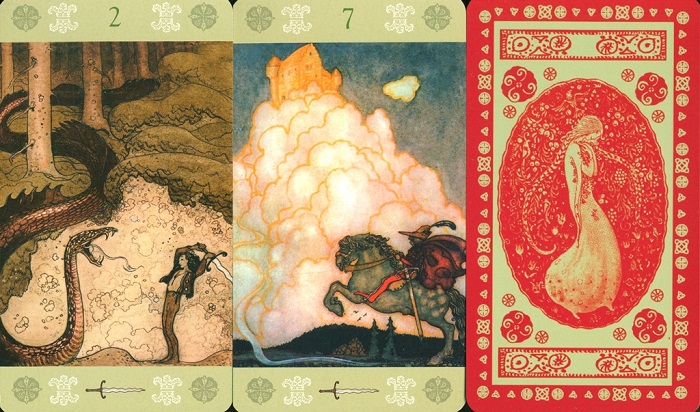John Bauer (1882-1918) was a prolific Swedish painter and illustrator working during the Golden Age of Illustration during the late 19th and early 20th century. Advancements in printing techniques allowed publishers to produce gorgeous full-color illustrations that were bound into books. The high demand for children's book and classic novel illustrations, calendars, product labels, advertising posters, and manufacturer give-aways like “yard-long” posters provided plenty of steady employment for artists and printing shops in Britain and the USA. Public consumption of illustrated products grew exponentially until production was tragically halted by World War I. The split between fine and commercial art became more pronounced by the middle of the 20th century, and the work of illustration artists like Bauer were excoriated for being “too commercial.”
Happily, by the start of the 21st century the work of Golden Age of Illustration artists was reclaimed and declared worthy of admiration. This deck is a fine example of an artist's oeuvre being harnessed into service of the tarot structure, much like the lusciously exotic illustrations of John Carré that were used to create the “Tarot of One Thousand and One Nights” (also produced by Lo Scarabeo), and Ed Buryn's “The William Blake Tarot.” Bauer's work is stylistically similar to the work of Kay Nielsen, Edward Heath Robinson, Harry Crane, and Arthur Rackham (Britain's much loved “Goblin Master”), and his color palette reflects the glorious sepia browns, golds, rich greens and cerulean blues seen in Edmund Dulac's work. There are notable similarities to Brian Froud's faerie decks in this tarot; as an artist, Froud is a direct descendant of the Golden Age illustrators. If these are artists you know and enjoy, this deck will send you to pink pig heaven!
The portion of Bauer's work selected for this deck centers on illustrations for fairy tales and folk tales, which gives the deck a magical, fantasy-fueled ambiance that's often appealing to tarotists. Images chosen for this deck stretch the boundaries of traditional tarot symbols in a thoughtful and imaginative way that's nicely supplemented by the accompanying LWB. The card format includes frames at the top and bottom with numbers (top) and suit symbols (bottom), which is much preferable to card names in multiple languages. The four suits are Chalices, Pentacles, Wands and Swords.
The Court cards are unusual but charming. Images may include more than one human figure, and the Knights and Pages may be of either gender. Some of the Kings and Queens are trolls, while others are romantic characters from fairy tales. The booklet's Court card meanings cleverly harmonize with the image; for example, the Page of Cups: “Seek out what you desire; do not let distractions bog you down.” The meanings given are brief but work well with the imagery.
One of the notable features of Bauer's art is his propensity for using the effects of scale and proportion to dramatize the action in stories. Tiny figures are placed in context with enormous animals, giants or trolls. Large foreground figures may be surrounded by tiny background figures. Other images feature a solitary large foreground character portrait. Carl Jung touched upon the singular quirk of the human imagination which can contain both enormous giants and tiny fairies without contradiction. Bauer skillfully used contrasts in dimension and proportion, close-ups and distant backgrounds to great effect. Many of the Major Arcana cards feature contrasting large and small figures that are leveraged to underscore greater powers at work in a querent's life.
The “John Bauer Tarot” is finely designed and formatted, and the LWB serves the deck very well. As is the case with other re-purposed art used for tarot decks, the images are rather small. One might wish these cards were 4x6” or larger so the viewer could more greatly appreciate Bauer's magnificent artwork. This deck works quite well for readings and private meditations, although the tarotist will have to spend some time becoming familiar with the imagery and meanings. The deck is a model of the William Morris school of thought: very beautiful but also useful. Highly recommended for those who swoon for this style of art work!
~review by Elizabeth Hazel
Lo Scarabeo 2018, 78 cards with 63-page little white book in English, Italian, French, Spanish, and Portuguese in a custom flip-top box.


